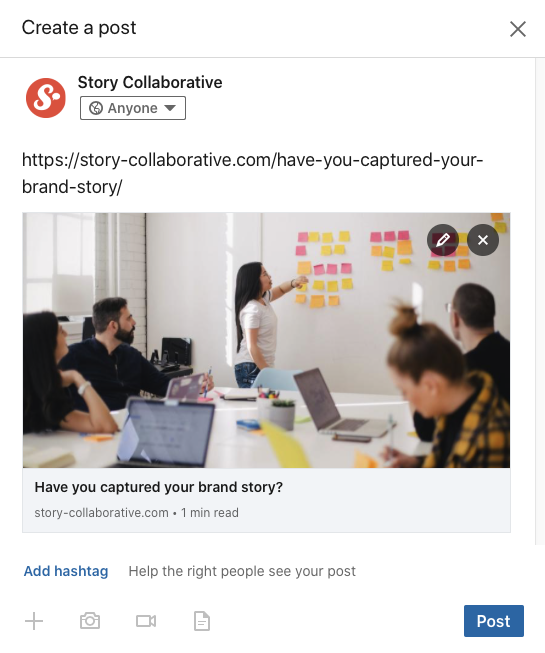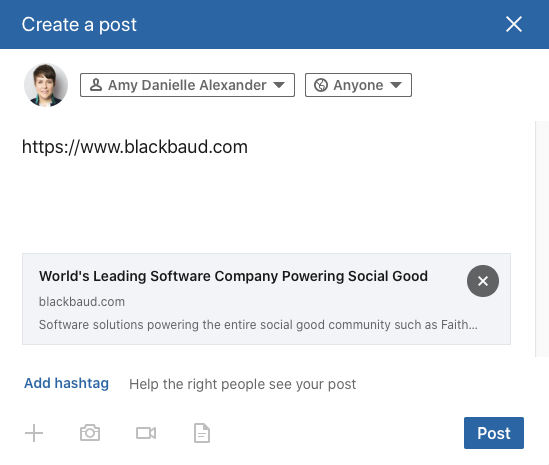Websites have changed. Have you noticed? Ten years ago (or maybe even five!), your website had to store pages upon pages of… whatever. Organizations with multiple departments and constituents had a nook and cranny for everything on their website. But, with information being shared, and expected, on places like Google My Business and Facebook, the distribution of information has shifted. Things that used to exist solely on a website now have to live where people are finding their answers, and it’s not always your website. So, the question is, what do modern websites have to achieve now? What is their purpose, in a world where social media and Google rule the web?
1. Modern websites have to be secure.
The importance of an SSL certificate.
In 2017, Google began to change the way it treated insecure websites (i.e., those that started with HTTP instead of HTTPS). The “S” of the HTTPS makes all the difference. It means that the connection is secure, and uses an SSL certificate. An SSL creates an encrypted connection so that any data passed to the server from your browser is secure.
Today, if you try to access a website from Google, or most updated browsers, you’ll receive this message:

In some cases, your browser won’t let you visit them at all. Needless to say, SSL certificates are no longer for e-commerce websites, or sites that take money through a form.
SSL is for all -- and an absolute must-have for modern websites.
Choosing the right platform to build your site.
But, having a secure website doesn’t stop with that extra “S” in HTTPS. The technology your site is built upon must be clean and minimally vulnerable to hacking. One of the biggest places we see this issue is with Wordpress plugins.
With decades of experience with Wordpress, our team will always have an affinity toward this web platform. But, the truth is that Wordpress, being open-source (and proud of it), relies heavily on plugins. If you’re not familiar with this technology, imagine the common phrase for smartphones: “there’s an app for that.” Plugins work in the backend of your website to allow new functionality and shiny new features. The average WordPress site has 20-50 of them.
When these plugins release an update, it creates a vulnerability. And, it’s easy to find your website with multiple out of date plugins, just sitting there waiting to be hacked.
According to WordFence, “more than 20 million attacks were attempted against more than half a million individual sites on May 3, 2020.”
According to our Chief Growth Officer, “all of the people coming back to work are going to bring tons of malware and compromised security back to work with them -- this is going to get lots worse, and already has begun.”
An alternative to Wordpress, and what our team believes to be the future of web design, is building a site on HubSpot’s CMS (content management system), recently re-launched CMS Hub. We’re a proud partner of HubSpot, but up until now, we could not in good conscience recommend this product. HubSpot took their experience with the CMS, added in suggestions from leading marketers and put it all on an enterprise level system that gives marketers and developers just what they need. Not to mention, it’s all built on a SaaS security system.
What do we say now about HubSpot's CMS Hub? It’s the secure, easy-to-use, elegant, and powerful option we’ll be suggesting from here on out.
2. Modern websites have to create a digital conversion.
A conversion happens when a prospective customer trades something, like their contact information, for something you’re offering. It could be an incentive, a free downloadable, a list of tuition costs, or any number of things. But, that conversion funnel your customer goes through is crucial. And, modern websites have to be built for this activity.
A website should be a conversion funnel.
Gone are the days when your website was a “digital brochure.” Long, long gone. Your website is a marketing and sales tool, 24/7. For some, it’s also a storefront. This may not change the fact that it’s also a source of information and engagement for current customers (and re-conversion!). But, in the end, you need a site that captures leads, offers value, and builds trust as potential customers explore your solution.
3. They have to educate.
The modern buyer's journey.
Today’s customers are what we call highly educated consumers. They don’t think to themselves, “Gosh, I need a new dryer. I better go over to Sears and let a salesman tell me everything he knows about dryers.” They get on Google and start researching. They might do that at 11 o'clock at night after the kids are in bed, or they might do it at 5:30a on their morning train ride. Prospects will look at reviews from others who have bought a new dryer, and they’ll read comparison articles about the top brands. They’ll research prices and consider the value of what they’re getting. They’ll ask their friend Sarah, who just bought a new dryer. And, they might even put out a Facebook post asking people to offer advice or opinions on the topic.
And then, when the customer is 98% sure they’ve found what they want, they’ll go to the store and talk to a salesperson for all of 5 minutes before making their final decision. OR, they’ll go online and buy it without a single sales interaction.
That is a modern sales process. You can put any substantial product or service into this story, and it won’t change very much. Even a more expensive pair of jeans may warrant the reading of a few extra reviews, or a little comparison shopping. So, it’s fairly clear that modern websites have to support this consumer behavior. They have to educate -- they have to be a digital salesperson! People will skim an astounding number of your web pages before engaging one of your sales team members. They will have made much of the decision without you -- if you let them.
By building out a website packed full of important content, you’ll build trust with your prospects and become a source of authority and information.
Website Beauty might be less important than you think
If you want to convert and education, then the site has connect with the buyer. Highly engaging and highly educational sites are immersive because of what they offer and teach. Smart design has to serve the content and the buyer's needs far beyond what we normally focus on - pretty pixels.
4. They have to work quickly, on any device.
According to Google, the probability of someone leaving your site without taking an action “increases 32% as page load time goes from 1 second to 3 seconds.” This means that if your site is slow to load, you have a serious problem. A poor shared server, a complex and messy backend, and poorly implemented photography and videography can all create a site that loads slowly.
In addition, modern websites have to provide a great user experience no matter the size of the screen being used. “85% of adults think that a company’s website when viewed on a mobile device should be as good or better than its desktop website.” Responsive design, or design that responds to the size of the screen, allows a website to interact on everything from a tv screen to a smartphone. But, your website must do more than this.
The simplicity and ease with which someone navigates your site, and is able to consume information, relies on smart design decisions, scannable content, and clean web design.
5. Modern websites need to produce usable data.
Your marketing, sales, and customer service teams all need great data in order to better serve their prospective and current customers. We like to call this group of departments a Story Team. In the end, they are responsible for your corporate story.
From the very first interaction, your marketing dashboard should be capturing data, serving up nurturing emails, and helping you manage every point of contact with a prospective customer.
Using a tool like HubSpot allows you to connect forms, documents, and calls to action so that you’re tracking right along with your prospective buyer.
In a modern age, your marketing team shouldn’t be guessing if their marketing dollars are working. And, how your website fits into this equation is absolutely crucial.
6. They must play well with Facebook, Google, LinkedIn...
Foundational SEO is a must.
A well-built backend that allows your site to be indexed on Google is non-negotiable. We are amazed at how many sites are still being developed without foundational elements like an XML sitemap. This file gives Google a crucial roadmap to your most priority pages, and helps it properly find and index all the content you have to offer.
Modern websites have to be miles ahead of these kinds of simple SEO tasks. They have to be smarter, more efficient, and more SEO-ready.
Ready for social sharing.
The other foundational element is all about how well your pages share on social media sites, like Facebook or LinkedIn. When you link to a page from your website, what kind of preview comes up? Pages that are optimized and ready for social media are a no-brainer in this socially-run age.
Consider the difference in sharing these two links:
The Pain-Free Guide to Your Next Website Redesign dives into practical steps you can take in planing an easy-breezy web build.









